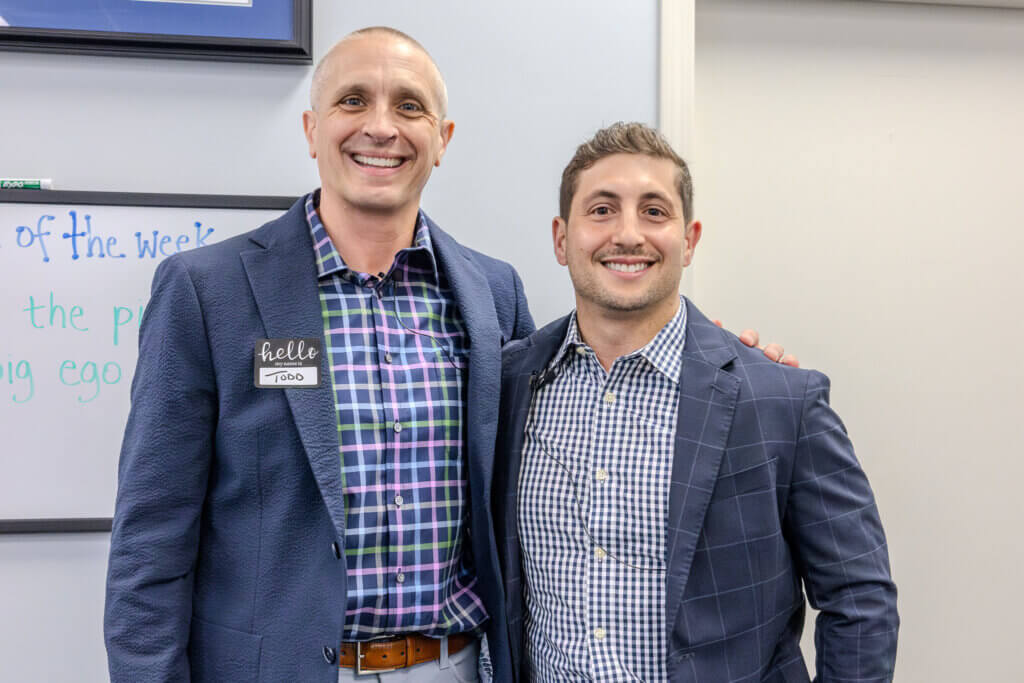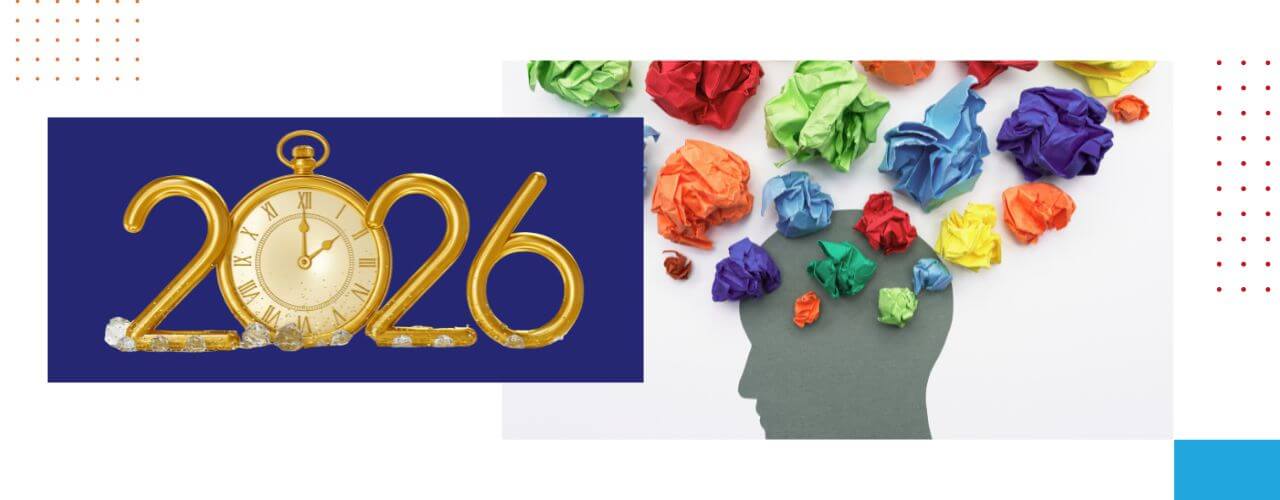Hello there, and welcome. If you’ve been struggling with knee pain, you’re in the right place.
We know how debilitating and frustrating knee issues can be, affecting every step you take and diminishing your quality of life. But don’t worry, help is here.
At Houghton Physical Therapy, we’re dedicated to not only understanding your pain but also providing effective solutions to improve your mobility and reduce discomfort.
Let’s start your journey to stronger knees today.
In this blog, we will discuss the anatomy of the knee, some of the knee problem symptoms you need to recognize, and some of the treatment options available to you.
Understanding the Anatomy of the Knee
The knee is one of the most complex and heavily used joints in the body, crucial for movement and bearing the body’s weight.
Here’s a breakdown of its key components:
- Bones: The knee joins the thigh bone (femur) to the shin bones (tibia and fibula), with the kneecap (patella) sitting at the front to provide protection and leverage.
- Ligaments: These include the Anterior Cruciate Ligament (ACL), Posterior Cruciate Ligament (PCL), Medial Collateral Ligament (MCL), and Lateral Collateral Ligament (LCL), all critical for stabilizing the knee during movement.
- Muscles: Major muscle groups supporting the knee include the quadriceps (front of the thigh), hamstrings (back of the thigh), gastrocnemius, and soleus (calf muscles), along with the adductors and abductors of the thigh.
- Menisci: Two crescent-shaped cartilage pieces between the femur and tibia, the medial and lateral meniscus, act as shock absorbers and stabilizers.
- Arthritis: Often a result of wear and tear, arthritis can degrade the joint, causing pain and stiffness.
Recognizing Symptoms of Knee Problems
Persistent knee pain can arise from various issues affecting any of the knee’s components:
- Bones: Misalignment or injury to the femur, tibia, or fibula can lead to significant pain and mobility issues.
- Ligaments: Damage to the ACL, PCL, MCL, or LCL often results in instability, with the knee feeling like it might give way.
- Muscles: Strains or overuse of the quadriceps, hamstrings, or calf muscles can limit your ability to move your knee smoothly.
- Menisci: Tears in the medial or lateral meniscus can cause pain, swelling, and a locking sensation in the knee.
Common Options For Treatment
When dealing with knee pain, several treatment options can provide significant relief, each serving a unique role in your recovery process:
Bracing and Supports:
Knee braces and supports are not just aids; they are essential tools in managing knee pain.
They help stabilize the knee, evenly distribute weight, and relieve pressure on the joint.
Copper braces and magnets are popular choices due to their reputed benefits in reducing pain and inflammation.
These options are especially beneficial during activities that place additional strain on the knee, helping to prevent further injury.
Taping:
Kinesiology taping is a therapeutic technique that not only supports weak areas but also enhances proprioception (joint position sense) which is crucial for maintaining knee stability.
This method improves alignment and awareness of knee positioning, which is pivotal in everyday movements and athletic activities.
Physical Therapy:
Physical therapy (PT) is often the cornerstone of treatment for knee pain.
It focuses on strengthening the muscles around the knee, increasing flexibility, and improving alignment and function.
PT can be highly effective, and studies show that with the right physical therapy regimen, up to 90% of patients can avoid surgery.
Most states offer direct access to physical therapists, allowing individuals to seek treatment without a physician’s referral.
During your sessions, if anything concerning arises, your PT will collaborate with your doctor to ensure a comprehensive approach to your health.
Don’t forget to inquire about Free Discovery Visits to understand precisely what’s going on with your knee.
Chiropractic, Massage, Acupuncture:
Your self-care team might include a variety of specialists, and each plays a critical role:
- Chiropractic Care: Chiropractors primarily focus on the spine and joints, helping to put your body back into alignment, which can indirectly relieve knee pain caused by postural imbalances.
- Massage Therapy: Regular massage is beneficial for overall health, stress reduction, and muscle recovery. It helps relieve tension in the muscles supporting the knee, enhancing recovery and flexibility.
- Acupuncture: This traditional Chinese medicine technique uses fine needles strategically placed at specific points to alleviate pain and improve body function. Western adaptations of acupuncture focus on stimulating nerve-rich areas of the skin to influence tissues, glands, organs, and various functions of the body.
Together, these therapies provide a comprehensive approach to managing knee pain, improving your quality of life, and maintaining long-term health benefits
So, When Should I Seek Professional Help?
When to Seek Professional Help It’s essential to consult a healthcare provider if you experience:
- Persistent Pain: If your knee pain lasts more than 1-2 weeks.
- Following Trauma: Such as a slip or fall leading to immediate severe pain.
- Symptoms of Infection: Like fever, along with swelling or discoloration.
- Mechanical Issues: If your knee locks or gives out, indicating potential ligament damage or meniscal tears.
- Neurological Symptoms: Sharp pain, numbness, or tingling should be addressed immediately to prevent further damage.
Exercises We Use To Help YOU
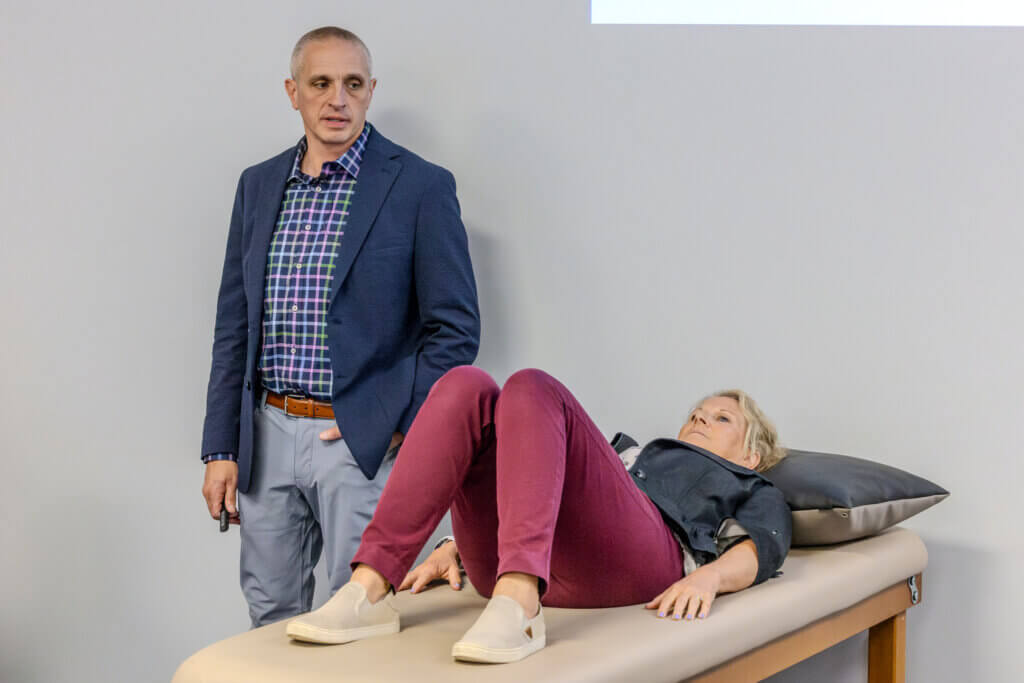
Supine Transversus Abdominis Bracing Exercise
For those looking to enhance core stability and reduce lower back pain, the Supine Transversus Abdominis Bracing exercise is a foundational move that can make a significant difference.
This exercise targets the deep abdominal muscles, particularly the transversus abdominis, which plays a crucial role in maintaining good posture and core strength.
Begin by lying flat on your back with your knees bent and feet firmly planted on the ground.
Place your fingers on your stomach, just above your hip bones, to feel the muscles engage during the exercise.
Focus on tightening your abdominals by pulling your navel toward your spine and slightly upward.
You should feel the muscles under your fingers contracting.
It’s essential to maintain this contraction without holding your breath—continue to breathe evenly throughout the exercise.
Hold the contraction for a few seconds, then relax and repeat.
Perform 10 repetitions per set, aiming for 2 sets each session. Incorporate this exercise twice daily, ideally, to strengthen the core muscles consistently.
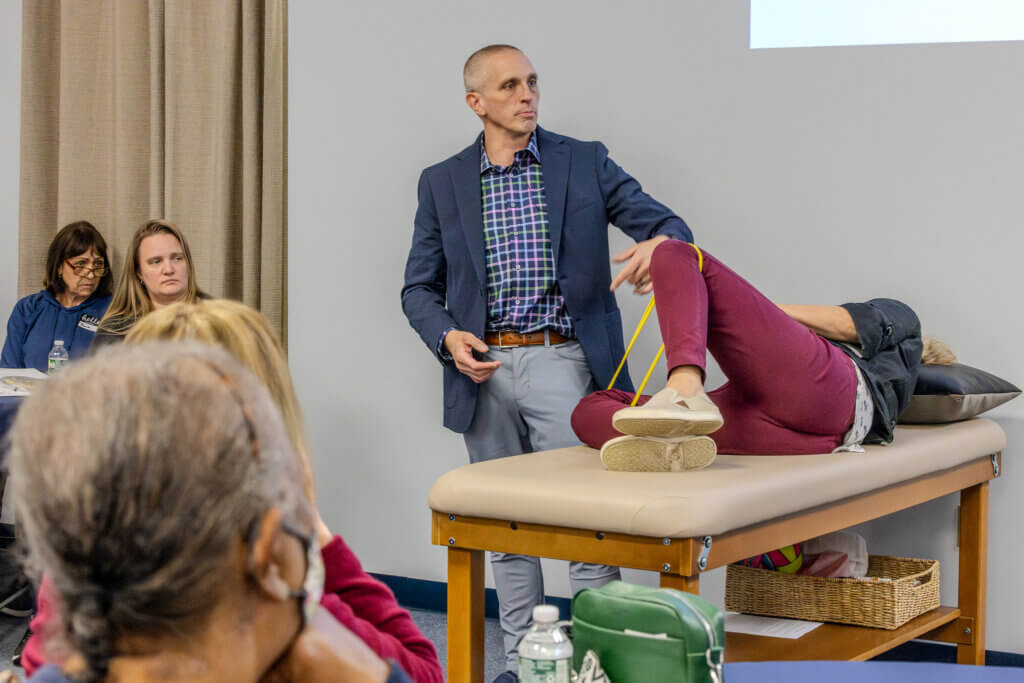
Clamshell
The Clamshell exercise is a superb choice for those aiming to strengthen their hip muscles and stabilize their pelvic region, which is particularly beneficial for preventing knee and lower back pain.
This exercise primarily targets the gluteus medius and minimus muscles, which are crucial for hip stabilization and lower limb alignment.
Start by lying on your side with your legs stacked and knees bent at a 45-degree angle.
Rest your head on your lower arm, and use your top hand to stabilize your frame by placing it on the floor in front of you.
First, ensure your hips and shoulders remain stacked to prevent rocking, a common mistake that can reduce the effectiveness of the exercise.
Engage your core and slowly lift your upper knee as high as you can without shifting your hips or pelvis, keeping your feet together.
Pause briefly at the top, then lower your knee back to the starting position.
Perform 10 repetitions per set, aiming for 2 sets on each side.
This exercise should be done twice daily for optimal results, making a total of 14 sessions a week.
Step Up
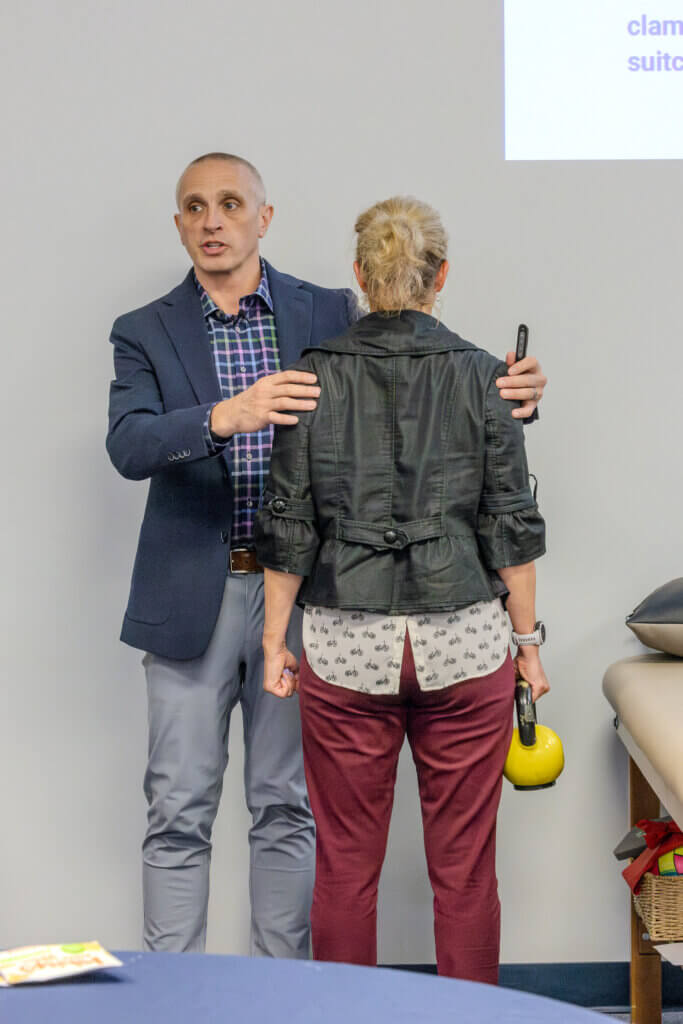
The Step Up is an excellent exercise for enhancing lower body strength and balance.
It primarily targets the quadriceps, hamstrings, and gluteal muscles while also engaging the core for stability.
This exercise is beneficial for improving daily functional movements like climbing stairs or navigating uneven surfaces.
Position yourself in front of a sturdy step or platform that is an appropriate height.
The height should challenge your muscles without causing strain—typically starting lower, especially for beginners.
Begin by standing upright with your feet about hip-width apart.
Step onto the platform with one foot, pressing through your heel to lift your body up.
Bring the other foot up to meet the first, standing fully on the platform. Then step down with the lead foot, followed by the second, returning to your original standing position.
Perform 10 repetitions per set, completing 2 sets for each leg.
Aim to incorporate this exercise into your routine twice daily, totaling 14 sessions per week.
Free Knee Pain Assessment: Take Control of Your Comfort
Why wonder what might be wrong when you can have clarity about your knee pain today?
At Houghton Physical Therapy, we offer a Free Knee Pain Assessment that goes beyond just a quick look.
We thoroughly examine your situation—from your daily activities to the specifics of your discomfort—creating a tailor-made plan just for you.
Our experienced team of therapists is dedicated to ensuring you’re not only feeling better but living better.
We explore your health history, analyze your movements, and consider your lifestyle demands to identify the root causes of your knee pain.
This isn’t about temporary fixes; it’s about providing you with lasting solutions that fit your life.
Don’t leave your health to chance with quick internet searches or unverified advice.
Come in and see us, or reach out at 508-223-2300 to schedule your free assessment.
It’s time to stop guessing and start your journey back to active, pain-free living.
Your knees—and your future self—will thank you for it!
More FREE Resources For KNEE Pain
Download our FREE KNEE Pain Report– 7 Simple Ways To Stop Chronic, Daily, Annoying Knee Pain
Read Our Blog – How To Eliminate Knee Pain In Time For Spring
Want videos on demand? Check Out Our YouTube Channel (Remember to hit subscribe so you don’t miss out on our new videos!)
On social media? Follow us on Facebook, Instagram, or LinkedIn
Tags: knee pain, Stronger Knees

